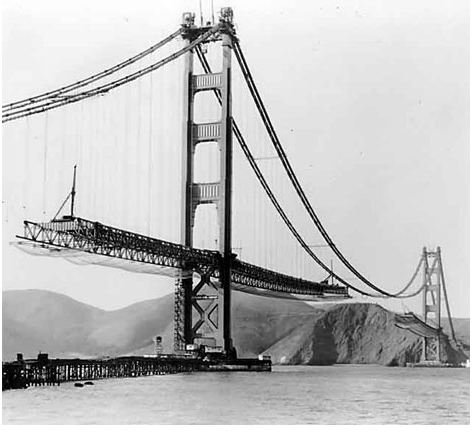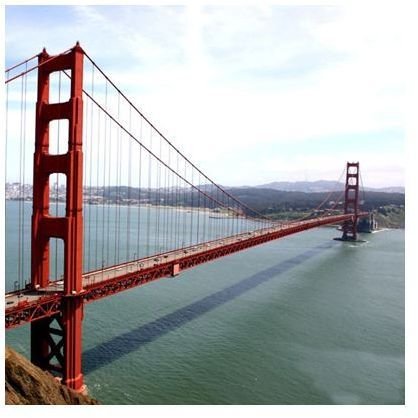Brief Introduction to The Golden Gate Bridge.
The Golden Gate Bridge is one of the longest suspension bridges in the world. Built across the Golden Gate or the opening of the San Francisco Bay into the Pacific Ocean, it is an iconic image well known to Americans and the world beyond. Connecting the city of San Francisco and Marin County, California, the Golden Gate Bridge is a very heavily trafficked route.
Constuction
The Golden Gate was designed and constructed under the supervision of chief engineer, Joseph Strauss. The team was composed of many experts from both cable suspension design experts and civil architects. When the construction of the gate began in January 1993 the estimated cost of building the whole bridge was more than $35 million dollars. Moreover, there were planned criteria decided for the bridge. A few of the important ones are listed below.
- Length of the span is one of the most important criteria for building a bridge, especially suspension bridges having a length of 1970 meters.
- Load capacity, which is basically divided into two quantities - live and dead load, was already decided before hand. Dead load is the total weight of the materials used in the construction of the bridge. For the Golden Gate it was kept at 21,300 pounds per lineal foot.
- Dynamic or wind load is the load by the wind force on the bridge. For the Golden Gate it was kept 30 pounds per square foot for the cables and 50 pounds per square foot for the towers.
- Terrain is an important aspect when designing a bridge both for the bridge foundation and for the ships that will be using the waterway beneath it. For this reason, there were special criteria for each tower, depending on the terrain on which it was placed.
- Maintenance is one more important aspect. It was thus decided that the vehicles using the Golden Bridge will have to pay a toll, which would ensure the bridge’s maintenance costs.
Technology

Suspension bridge technology uses structures and fabrications with wire cabling. This concept was invented by John Roebling, a German immigrant and an engineer who later came to the United States and settled down as a farmer. It was his idea to use wire cabling in making bridges for faster and reliable transportation. It was only because of the contribution of John Roebling that magnificent wonders such as the Brooklyn Bridge and the Golden Gate Bridge were made in America.
Design and Specifications
The design of the Golden Gate Bridge consists of two main towers at the center. The weight of the entire bridge is supported by two cables that run parallel to each other on either side, passing through the two towers and fixed to the concrete structures at each end. The cables used in the bridge consist of 80,000 miles of wire and 27572 strands.
Though the Golden Gate Bridge appears red in color its original color is an orange vermillion. The Bridge was painted with red lead primer initially and was then applied with a lead based coating. Later on in early nineties, the bridge was top coated with Acrylic paint.
Also, as far as aesthetics are concerned, the Golden Gate Bridge is regarded as one of the most beautiful bridges in the world. It is also one of the most photographed bridges in the world. With recent advances in technology, the bridge was retrofitted with earthquake resistant mechanisms, which would allow it to resist seismic activities.
Today, the Golden Gate Bridge stands as a prominent American Landmark, an example of surperb technology, and a valuable mode of transportation to the thousands of vehicles that drive on it every day.
References
- Golden Gate Bridge - http://goldengate.org/
- Jackson, Donald C. (1995) “Great American Bridges and Dams” John Wiley and Sons. 360 pp
- Bridging the Bay - http://www.lib.berkeley.edu/news_events/bridge/gate_2.html
- Images: web urbanist, Daily history
